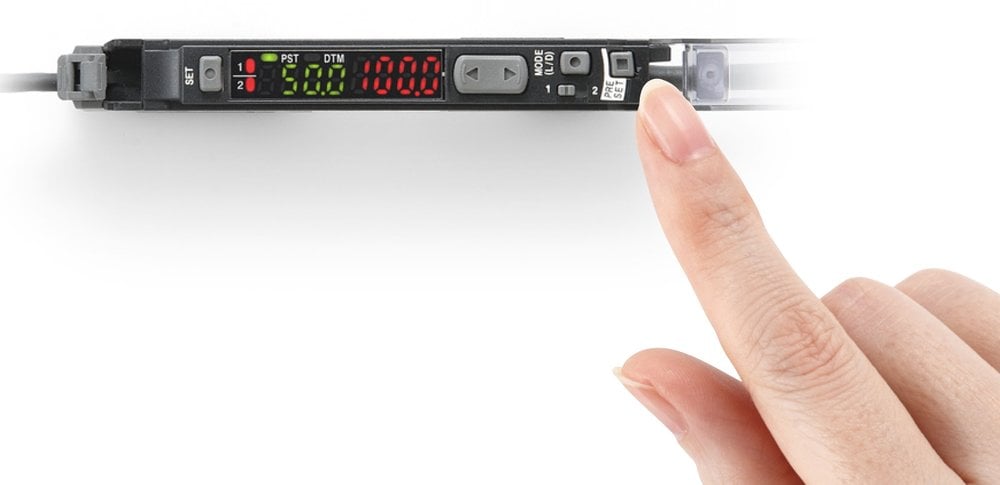www.industryemea.com
02
'11
Written on Modified on
Digital laser presence/absence sensors in the LV Neo series
Over and above its unrivalled performances levels, this new series features a really easy parameter setting system.

This new series is set apart by the simplicity of its adjustment method. All the accessible configurations can be adjusted simply by pressing the PRESET button. What is more, Keyence has predefined a set of operating modes commonly used in industry: A zone detection mode, a background erasure mode, an antifouling mode, an automatic maintenance mode, etc. All the modes are directly accessible when the sensor is powered up.
The display system has been simplified to make it much easier to spot detection problems: all the sensors display either the value 0 if no part is present, or the value 100 in the presence of a part. Formerly, each sensor gave a different set value depending on the quantity of light received. Now the operator can spot unstable detection at a glance.
Machine fouling and sensor misalignment are factors that frequently affect machine operation. This has led Keyence to develop its new DATUM calibration function. This function automatically adjusts the detection threshold to match variations in light intensity, thus ensuring stable detection whatever the machine's environmental conditions.
Class 2 sensors are restrictive in terms of operator protection. Keyence has achieved the technological feat of maintaining sensors with impressive characteristics while using class 1 lasers.
The LV-Neo range is a very wide one; this enables you to find the model that corresponds to your detection requirements, every time. Response time of 80µs, detection distances of 35 metres, fully miniaturized cells, 50µm laser spots – the LV NEO range can meet all your detection needs, whatever the surrounding conditions.
This development of the LV-NEO range ties in with a logic of uniformity as to operator knowledge. Keyence also proposes its FS-NEO (fibre optic sensor) and PS-NEO (photoelectric cell) ranges. The users can find all the functionalities set out above. The operator no longer needs to find out about a new sensor for each application – he has the same interface on all the detection stations. This cuts installation and operator training times considerably.
The display system has been simplified to make it much easier to spot detection problems: all the sensors display either the value 0 if no part is present, or the value 100 in the presence of a part. Formerly, each sensor gave a different set value depending on the quantity of light received. Now the operator can spot unstable detection at a glance.
Machine fouling and sensor misalignment are factors that frequently affect machine operation. This has led Keyence to develop its new DATUM calibration function. This function automatically adjusts the detection threshold to match variations in light intensity, thus ensuring stable detection whatever the machine's environmental conditions.
Class 2 sensors are restrictive in terms of operator protection. Keyence has achieved the technological feat of maintaining sensors with impressive characteristics while using class 1 lasers.
The LV-Neo range is a very wide one; this enables you to find the model that corresponds to your detection requirements, every time. Response time of 80µs, detection distances of 35 metres, fully miniaturized cells, 50µm laser spots – the LV NEO range can meet all your detection needs, whatever the surrounding conditions.
This development of the LV-NEO range ties in with a logic of uniformity as to operator knowledge. Keyence also proposes its FS-NEO (fibre optic sensor) and PS-NEO (photoelectric cell) ranges. The users can find all the functionalities set out above. The operator no longer needs to find out about a new sensor for each application – he has the same interface on all the detection stations. This cuts installation and operator training times considerably.

